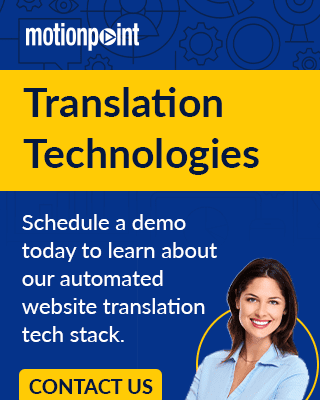As businesses grow and learn about their global audience, they should start investing in localization platforms. Creating engaging and informative content in preferred languages helps companies stay ahead of competitors.
When a business has a localization strategy, they actively find ways to localize their websites and software applications.
What is Localization?
Before understanding what an actual localization platform is, you first must understand what localization means. When people think of localization, they often think of literal translation. That is not the complete definition of localization and its processes.
Translation involves adjusting the content for its target audience by rewriting it into a consumer-preferred language. Localization is adapting content for a specific country or region, considering their languages, cultures, markets, and User Experience (UX).
What is a Localization Platform?
Many language service providers have tools to help translate websites, like Content Management systems, for businesses.
The most popular method is proxy based localization. This website translation technology is seamless and helps businesses manage their translation workflow and automate technology stack translation. This web localization platform allows enterprises to localize their publishing platforms effectively and quickly.
Localization Platform Translation Methods
The translation integration option becomes part of a business translation and development workflow process in publishing platforms. Proxy translation simplifies and speeds up the translation process by eliminating the need for specific platforms or technology.
A superior translation services provider should offer both options on their localization platforms. Read the ultimate guide to website translation processes, technologies & providers for more information.
Ways to Localize Website Content
Businesses that are expanding globally use two types of localization. The first type is adapting websites to the local language and culture. The second type is adapting software to the local language and culture.
Both need to adapt content for different languages. For example, Arabic reads right to left as opposed to left to right like many languages. They also need to adjust dates, time formats, and cultural differences.
Below are the most common options available on localization platforms by translation and localization companies.
Website Localization
You can use a proxy translation solution or translation integrations such as CMS Connectors to localize site content. Website localization provides culturally relevant content and helps increase engagement and conversions.
It also boasts benefits international market penetration, improved user experience, multilingual SEO, and increased ROI.
Software Localization (L10n)
You can also do software localization using proxy translation and translation integrations such as APIs. You can strengthen your brand by localizing mobile apps, payment portals, and product experiences.
A good website localization company can also localize software tools quickly, with good quality and cost efficiency.
Mobile Site Localization
Mobile site localization is the process of adapting a website specifically for mobile devices while also considering language, culture, and regional preferences. This is important for businesses that want to give a smooth and easy experience to their mobile users worldwide.
Localization Software Tools
Companies with translators often use localization tools to adapt their content. These tools can be found on translation service providers’ platforms.
Typically, localization software tools are comprised of two major components:
- Translation Management Systems (TMS) is a tool that provides translation visibility and the management of translation workflows.
- Computer-Assisted Translation (CAT) is a tool that helps translators create a customized experience for their target market.
Invest in Website Localization Services
Finding a website localization technology provider that offers a wide range of services can be challenging. A good localization platform can translate websites, publishing platforms, or tech stacks to fit any local language and culture. It can overcome the challenges that may arise in the process.
MotionPoint has over 20 years of experience providing translation technologies and management on its localization platform. We have powered over 1,500+ websites for hundreds of global brands in over 40 languages every day.
Providing consumers content in their preferred languages isn’t complicated or challenging. Reach out today and have our expert guide you to the correct translation technologies for your global audiences.
Last updated on May 04, 2022

